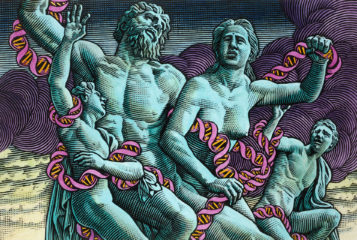In law school I took a family law seminar on artificial reproductive technology (ART). It was a fascinating class and one of my favourites. Interestingly, I was the only male in the class, and surprisingly was the only male to have ever taken the class.
Family law is predominately practised by female attorneys, so women being the majority of students in family law classes is understandable. ART and the ethical and legal issues it entails are largely thought of as women's issues, as are the majority of reproductive issues. This should not be the case, however, as ART involves men in many ways. Men can and should offer valuable insights and opinions to the discussion of ART.
Although ideally, legislative bodies should represent their constituents demographically, the current reality is that most legislators are men. In 2018, men made up just under 75 percent of state legislators, and accounted for over 76 percent of the 2019 United States Congress. As such, it is mostly men who write state and federal laws. ART is a quickly advancing field, and legislation addressing ART issues is sure to increase exponentially, so men need to understand these issues so that they will be equipped to craft laws.
Additionally, men hold the majority of state executive offices - women fill only 27.6 percent of statewide executive offices, and only nine of the fifty state governors are women. Executives must understand the issues ART presents so they can adequately enforce laws involving ART. Moreover, executive officials help shape the views of the populace and the goals of the legislature.
Finally, the judiciary branch is majority male. Women make up approximately one-third of the both the federal and state benches, leaving men to fill the other two-thirds. Issues involving ART are frequently litigated, so the men on the judicial benches need to understand ART issues to rule on them.
Another key reason men need to understand the issues surrounding ART is that ART implicates men, as it requires male gametes, or sperm. Men who contribute sperm to be used by their spouse or partner need to understand that this may be used to create embryos that will be frozen for years or destroyed. They need to understand the potential legal issues that may arise if their relationship breaks down - a battle over parentage or child support, or a custody battle over the donated gametes or embryos ensues; or the legal issues that could arise if the couple disagrees about what to do with the gametes or embryos at a later date. Finally, before contributing sperm for ART, men need to understand the potential health risks ART poses for their partner and for the children conceived through ART.
Anonymous sperm donors too, need to understand the implications of their donation. This includes the possibility that donor-conceived children will likely have questions about their biological father, and the lack of connection to their biological father may cause distress.
ART also creates potential social and ethical problems. For one, the same sperm donor is often used many times - potentially resulting in dozens of half-siblings, sometimes in the same geographical area - the most obvious ethical problem this can create is accidental incest. But a myriad of other problems can arise, such as the issue of how to handle frozen embryos, sex-selective or trait-selective termination of embryos, or exploitation of lower-income women who are more inclined to undergo surrogacy for money.
Finally, because the ART industry is barely regulated in the USA, it is fraught with scandals, such as people arranging ART-assisted pregnancies without plans to raise the child, ART doctors putting profits ahead of the health and well-being of their patients, and doctors using their own gametes instead of donor gametes. Men need to be aware of these problems so they can make informed decisions about donating sperm for ART purposes, or taking part in ART with their partner.
In a broader sense, men have a social responsibility to understand the issues ART poses. Male doctors need to understand the issues ART presents so they can advise their patients; male attorneys so they can effectively advocate for their clients; male psychiatrists and therapists so they can counsel their patients; and male voters so they can knowledgeably vote on ART issues that appear on the ballot paper.
Additionally, because approximately half of the children conceived through ART will be men, men need to understand the difficulties that children conceived through ART face. While women can certainly help, men also need other men to understand them and be a part of their social circle. Men need to understand ART so that they can be supportive and understanding mentors, friends, fathers, and brothers to other men conceived through ART who are facing difficulties because of the nature of their conception.
ART is not only a women's issue. Men need to take responsibility for educating themselves on ART's issues and society needs to begin viewing ART as an area that affects men and women in many ways.





Leave a Reply
You must be logged in to post a comment.